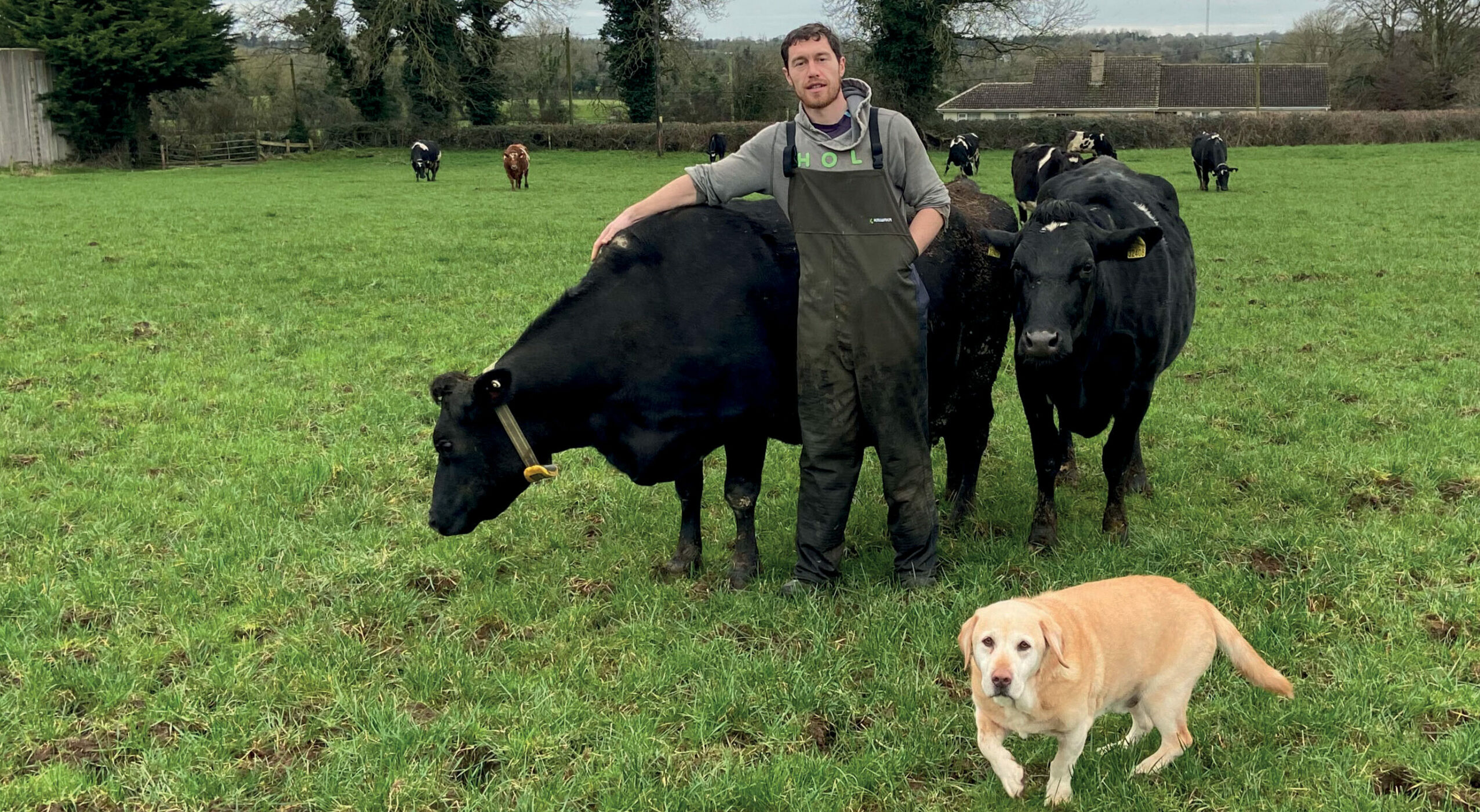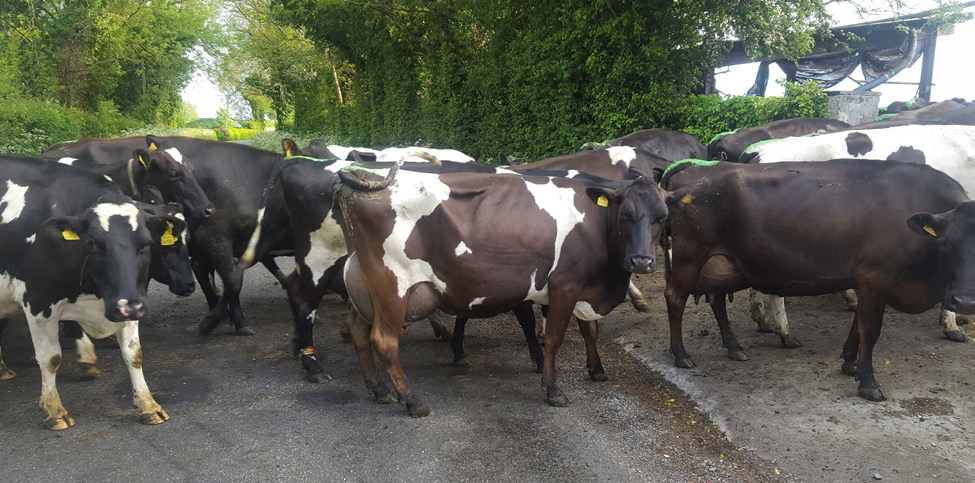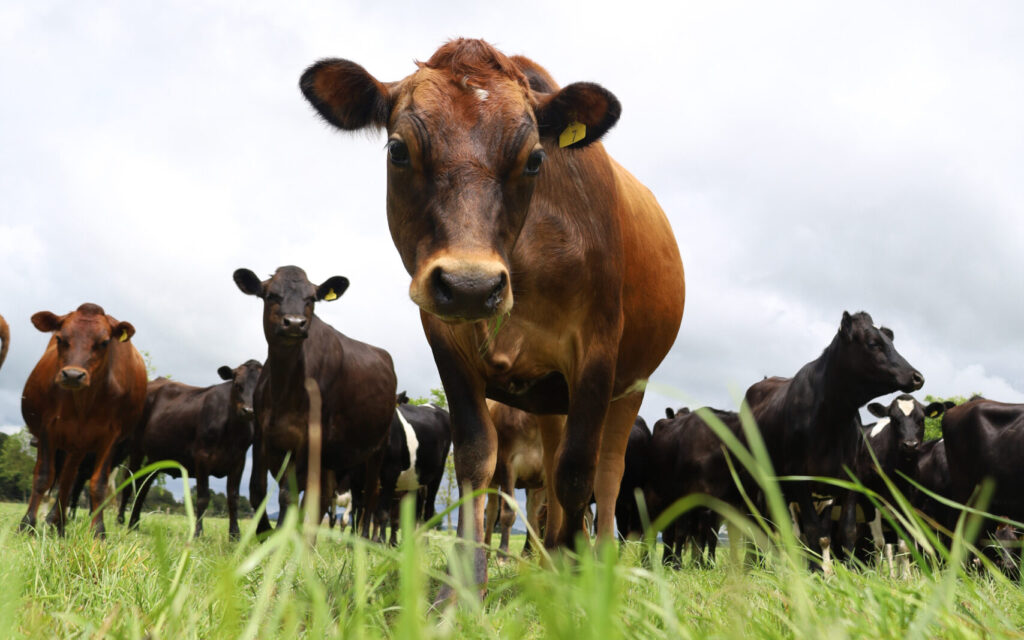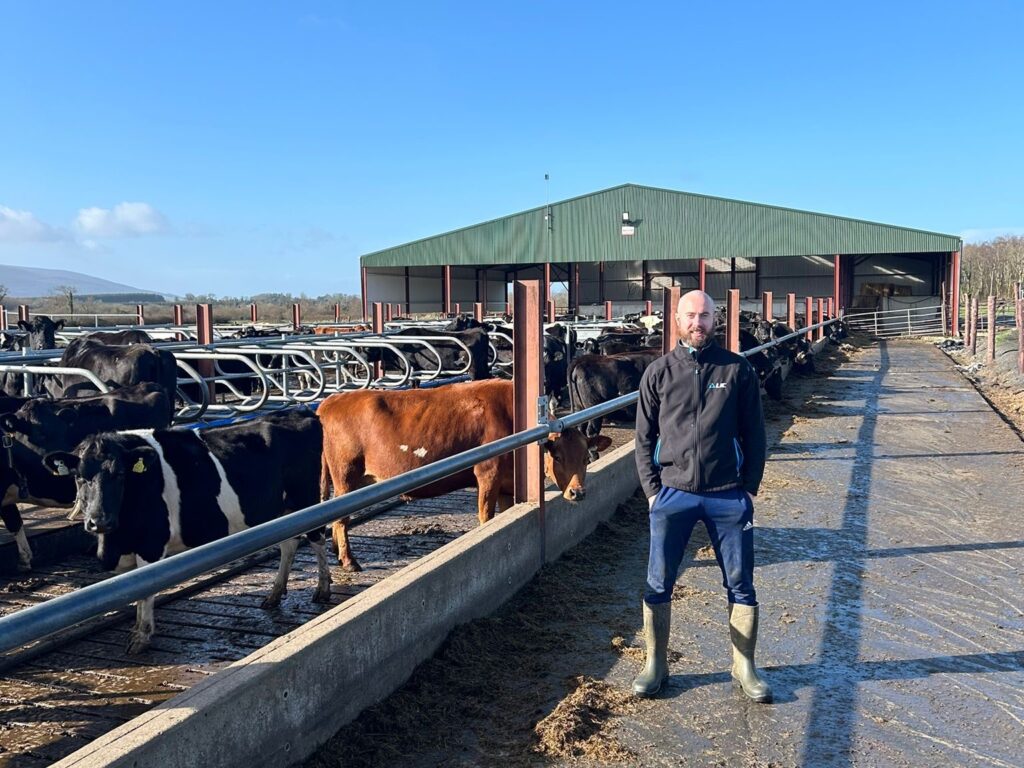In a bid to improve the profitability, efficiency and fertility of his dairy herd, Padraic Harnan is using more LIC sexed semen than ever this spring, choosing top trait bulls that match up with his breeding animals.

We started using sexed in 2021, buying 60 straws as a bit of a trial,” he explains. “We were cautious to begin with, as we didn’t want to affect our six-week calving rate. But last year showed we could get good results, so we’ve bought 100 this year and will monitor it carefully to see how we do.”
As with many dairy farmers in Ireland, Padraic was concerned about the bull calf issue. He could see consumer pressure building and calf welfare coming more to the fore.
“Before our switch to sexed semen we were getting about 40 bull calves a year. Last year we had two from the 60 sexed straws. They really had no value at all. We’re small enough to put them out to local ‘hobby’ farmers who just want a few to rear, but they weren’t adding to the farm returns.
Padraic farms with his uncle, Liam, at Kilmore, Kilcock, Co.Meath. They have a herd of 137 NZ crossbred milkers that he’s been improving since 2014. This was a predominantly Holstein herd until then, but in late 2013 he bought and started milking the new herd. He sold his entire herd and, with the help of an LIC breeding advisor, bought in the crossbreds from three different herds.
“It was a good time to buy as quotas were still in place and quite a few top breeders were over-stocked,” he says. “I was able to start again with some very well-bred stock. At the moment some of the cows are older – last year 13 of 100 were in their 9th lactation – but now I’m getting plenty of heifer replacements through with my use of sexed semen. So I can afford to cull the older ones, those that are low performers or have SCC issues, and bring the average age down.”
With a total farm area of 67ha, the grazing platform is 32ha with the remaining grassland used for silage and youngstock. The farm can often get off to a wet and cold start at the turn close to 250-260 days a year.
“Magic day can be between April 16 – 18 here, so we often have to feed concentrates and silage on the shoulders of the season. Not something I want to do, but we have to keep production up at peak times. Concentrate use last year was around 900 to 950kgs/head.” He says grass growth over the past three years has not been good, with yields around 12 to 13 tonnes/ha, partly due to the cold starts to the years, and partly due to last year’s drought.
Investment in technology has come alongside the increased use of sexed semen, with each cow now wearing a collar that will indicate when she’s ready to inseminate. “Timing of insemination is key and needs to be between 18 and 22 hours after the onset of heat. Previously we used tailpaint but this time the collars were great and we had excellent technicians, Gerry McCann and David Reilly from Eurogene doing the work.”
He admits he had somewhat mixed results, but has not been put off at all, hence the increase in sexed semen use this year.

Selecting the right cows
“We’re trying to breed from our very best cows. The ones we select have to have calved in early February with no problems or retained cleansings. Body condition at service must be between 2.75 and 3, and she must have a history of getting in calf early.
“It’s the top 40-50% of our herd that we want to breed our replacements from, and this is based on production and fertility.
“We used a CIDR programme for 30 of the cows to breed all replacements with AI in the first 14-16 days of breeding, bringing week 3 into week 1 of breeding. This also helps to fix the time of serving 18-19 hours post GnRH being administered, it’s intense when calving starts, but saves on labour in the long term as all calves are similar in age.”
The results here were 59% returning a conception rate to first service. There were 31 cows with collars, and these returned 60% to first service.
“The heifers were on a PRID eight-day program with two shots of PG and Receptal at serving. This programme helped with managing labour as these animals were not going into the yard or through the parlour twice a day. We got 46% to first service with this group. “We weren’t happy with this result at all, expecting higher, but we’re investigating and we’ll change things for next year.”
He says he’s looking for ways to improve these figures, and that selecting the right cows is key. “I think we could probably use 90 straws and get the number of heifers we want with a few extra,” he says. “But I’m willing to have a slightly lower number holding to first service to reduce the number of bull calves.” He accepts he’s losing some days in milk with a lower conception rate but that choosing bulls and the best cows able to deliver more on solids is helping to compensate.
He weighed all cows in July 2021 and found the average of the whole herd was 489 kgs with the mature cows averaging 520kgs. He’d like the herd average to increase by about 20 kgs, so is concentrating on more Friesian than Jersey genetics for the next season or two, as he feels he’s put in improvements to boost solids. With a delivery of 526kgs MS, he’s showing the efficiency of the breed recording over 1.1kgs MS/liveweight).
Solids averaged 513 kgs/head in 2022 with 3.89% protein and 5.06% fat. His target is to get to 4% protein while keeping the fat percentage the same. His average lactation length is 3.7 which he would also like to increase to 4.
“In 2022 we used Premonition (JEX143), Hoss (JE4989), Dexter (JE5061), Floyd (JE5992), Homebrew (JEX191), Trapeze (FR7974) and Moorehill Max (FR6892) one of the bulls on the IBB programme. A lot were picked for udders, capacity, fertility and milk solids. We have to be careful as we have quite a bit of Sierra and PSQ behind these bulls, plus Mint Edition, so we need an outcross.
“For 2023 we’re using Banff (JE8085) and Lamar (JE7998), Homebrew (JEX191), Hardcopy (JEX152) Premonition (JEX143), Trapeze (FR7974, Olympic and Deans Professional (JEX140).”
He doesn’t choose bulls on EBI, but instead relies on BW, saying there is more daughter information available. The herd’s EBI has remained in the top 20% even though he is using lower EBI ranking bulls averaging between 160-250 EBI.
“I’m totally committed to LIC genetics,” he says. “The results speak for themselves, and they’re producing the right milking cows for my farm situation. I’m looking forward to seeing the new heifers coming through and believe there’s a great future ahead for dairy in Ireland.”
Contact your breeding advisor to hear more about how you can benefit from LIC sexed semen.



